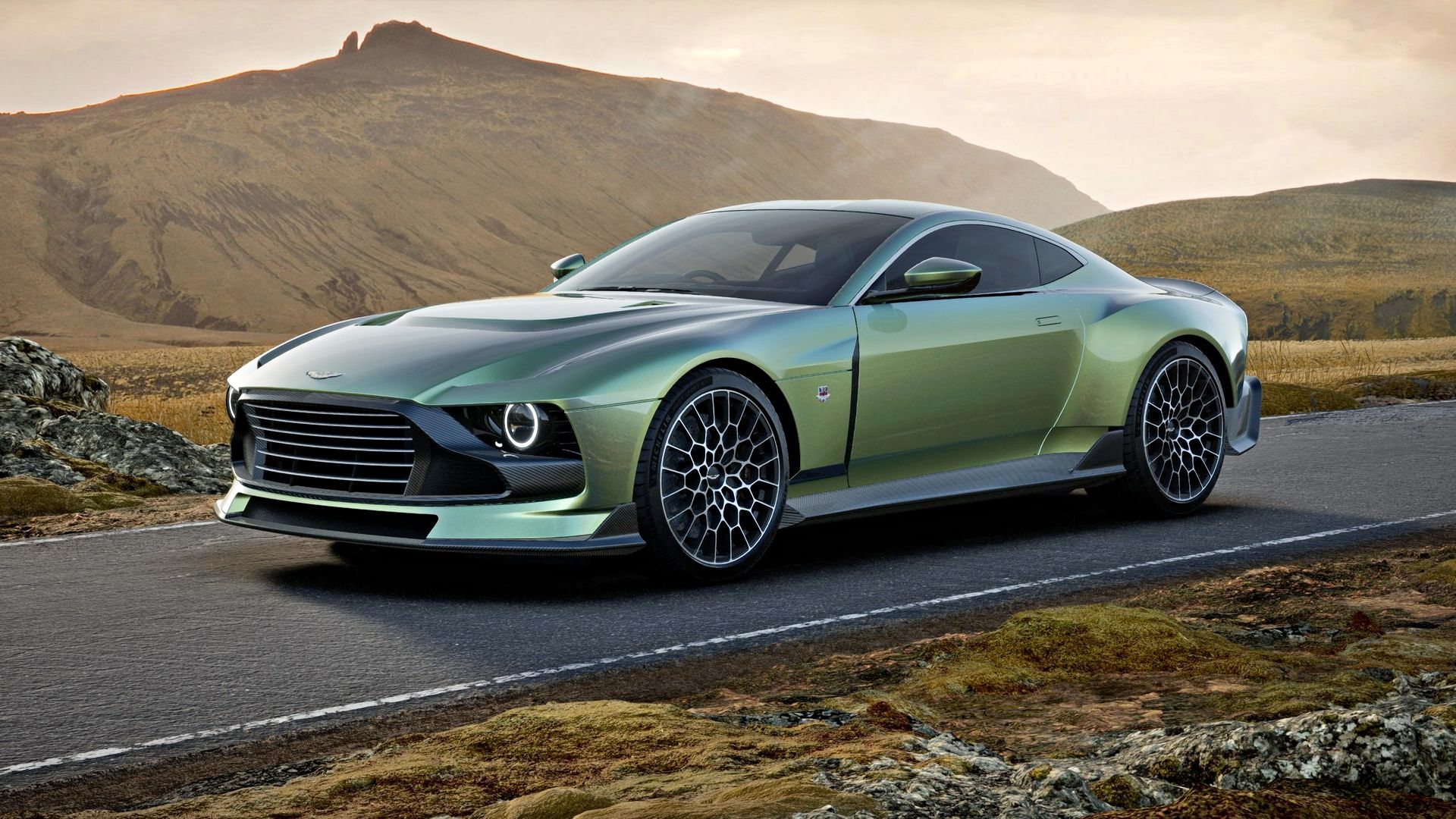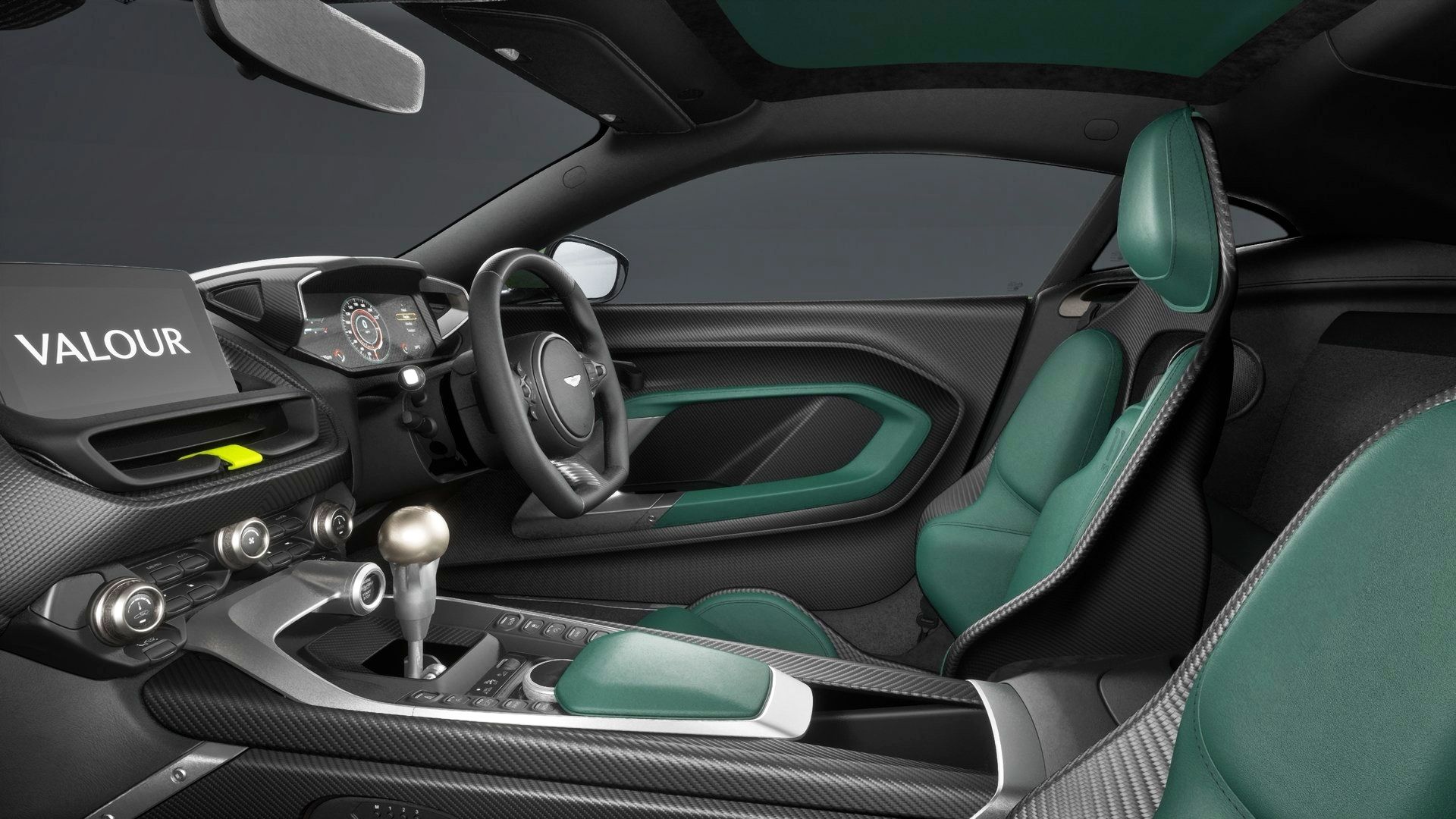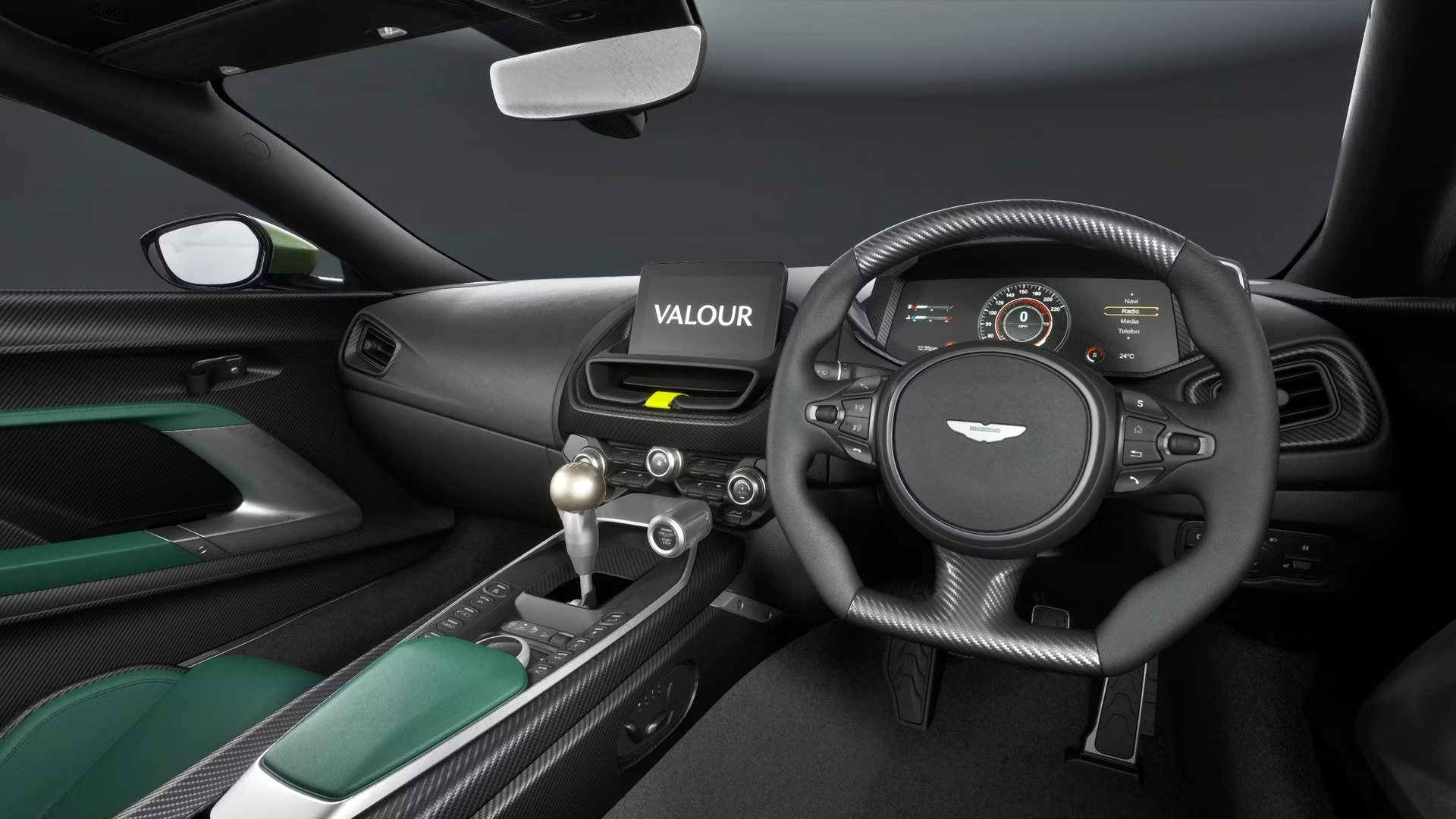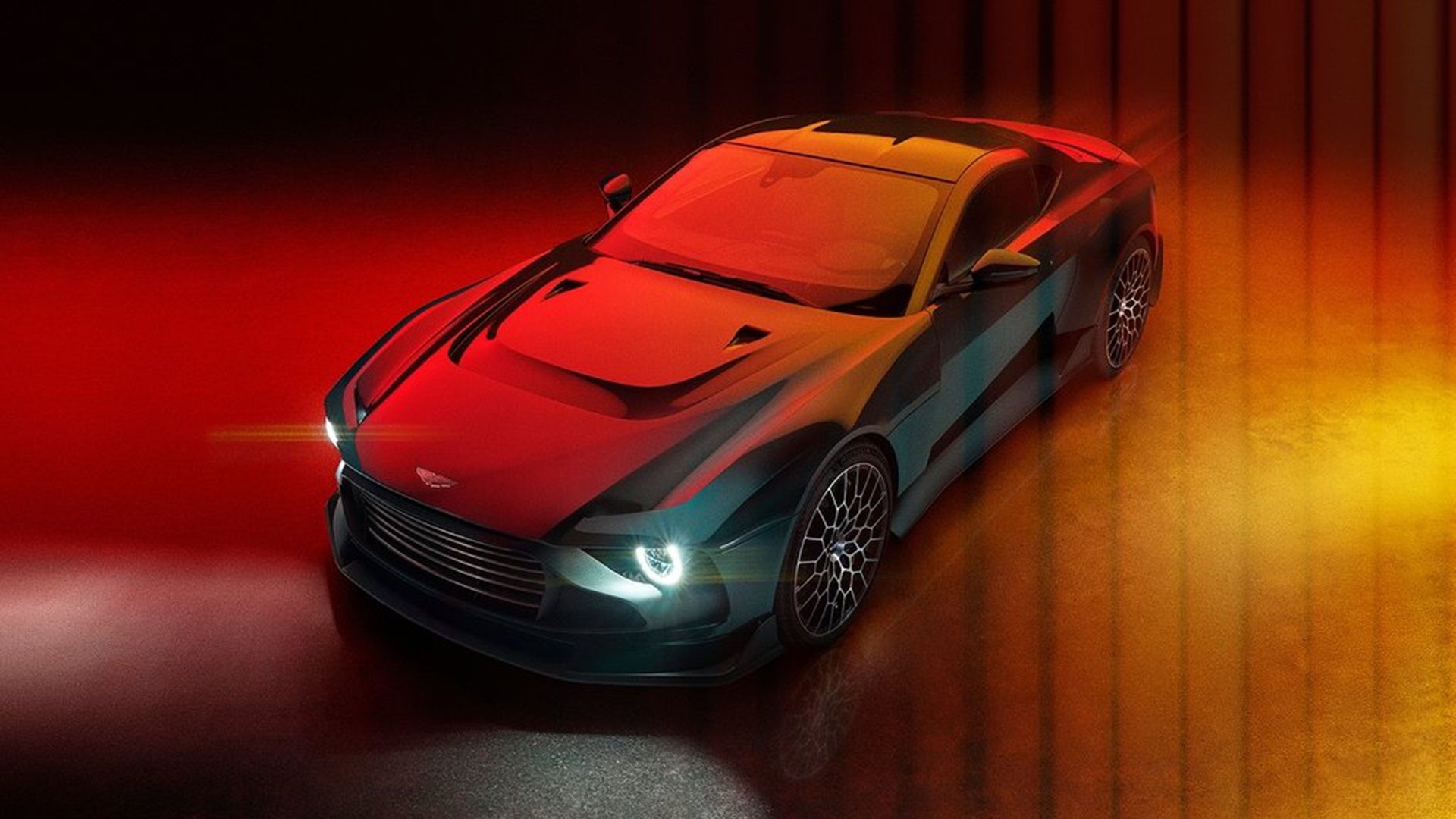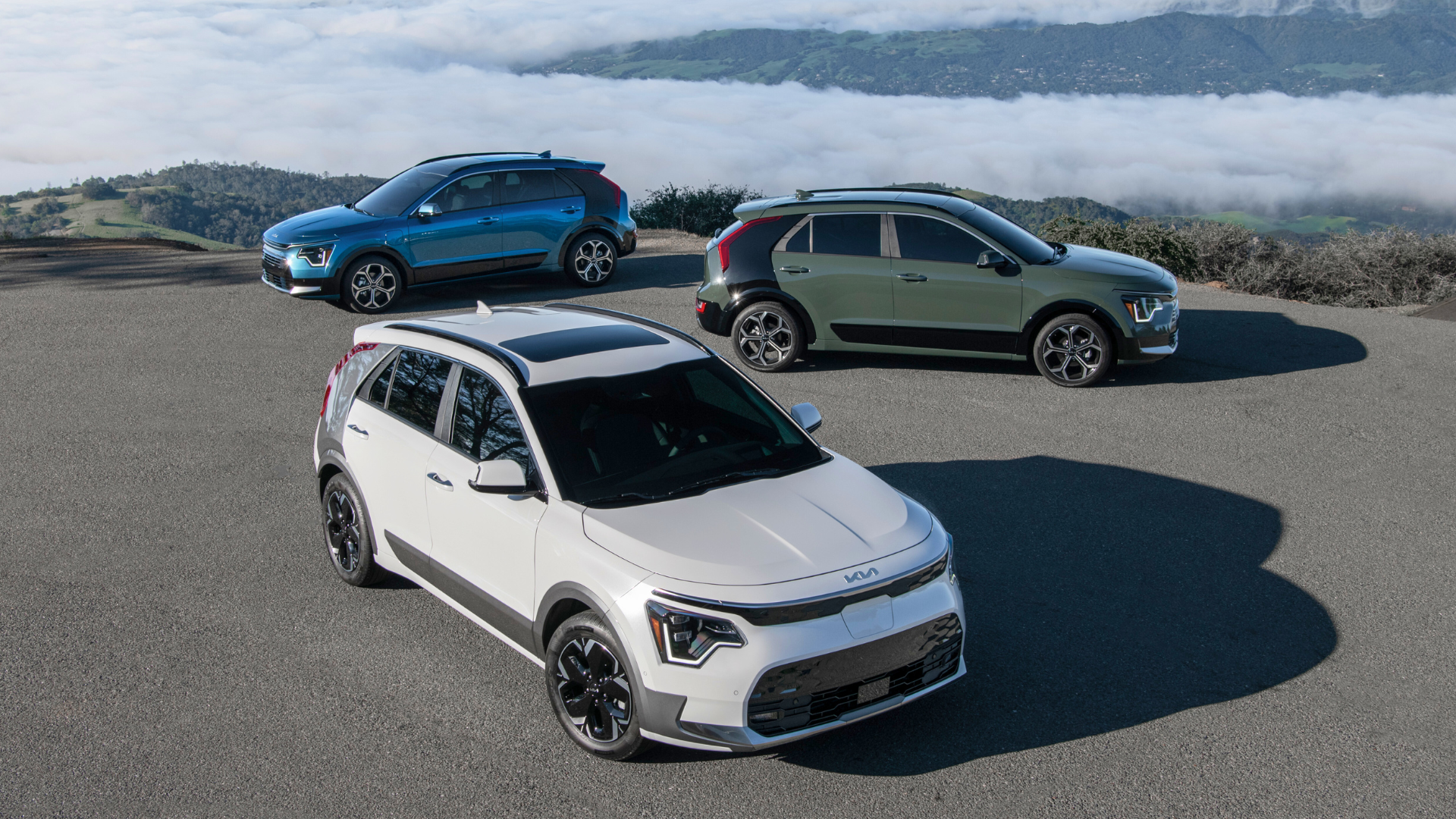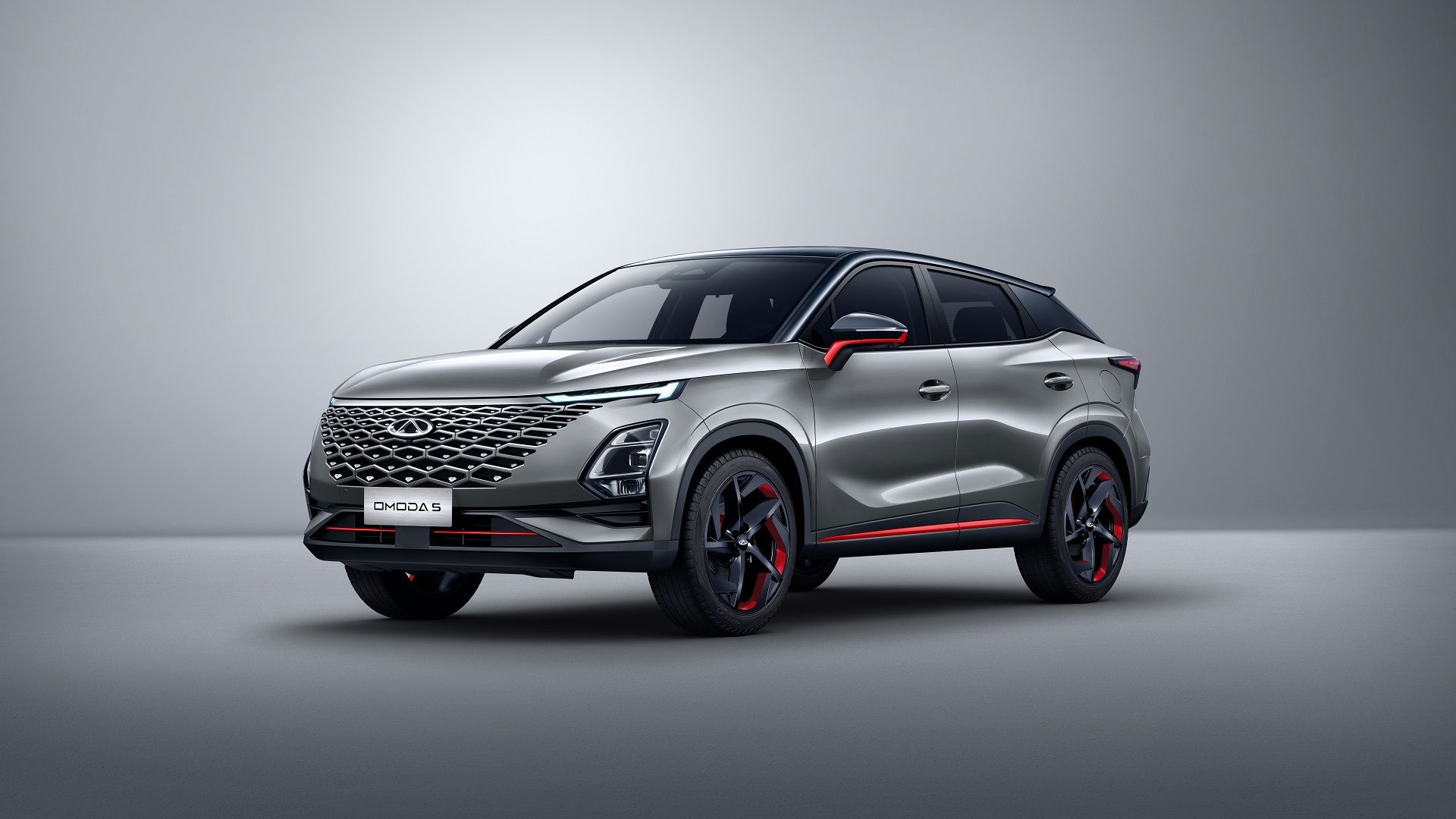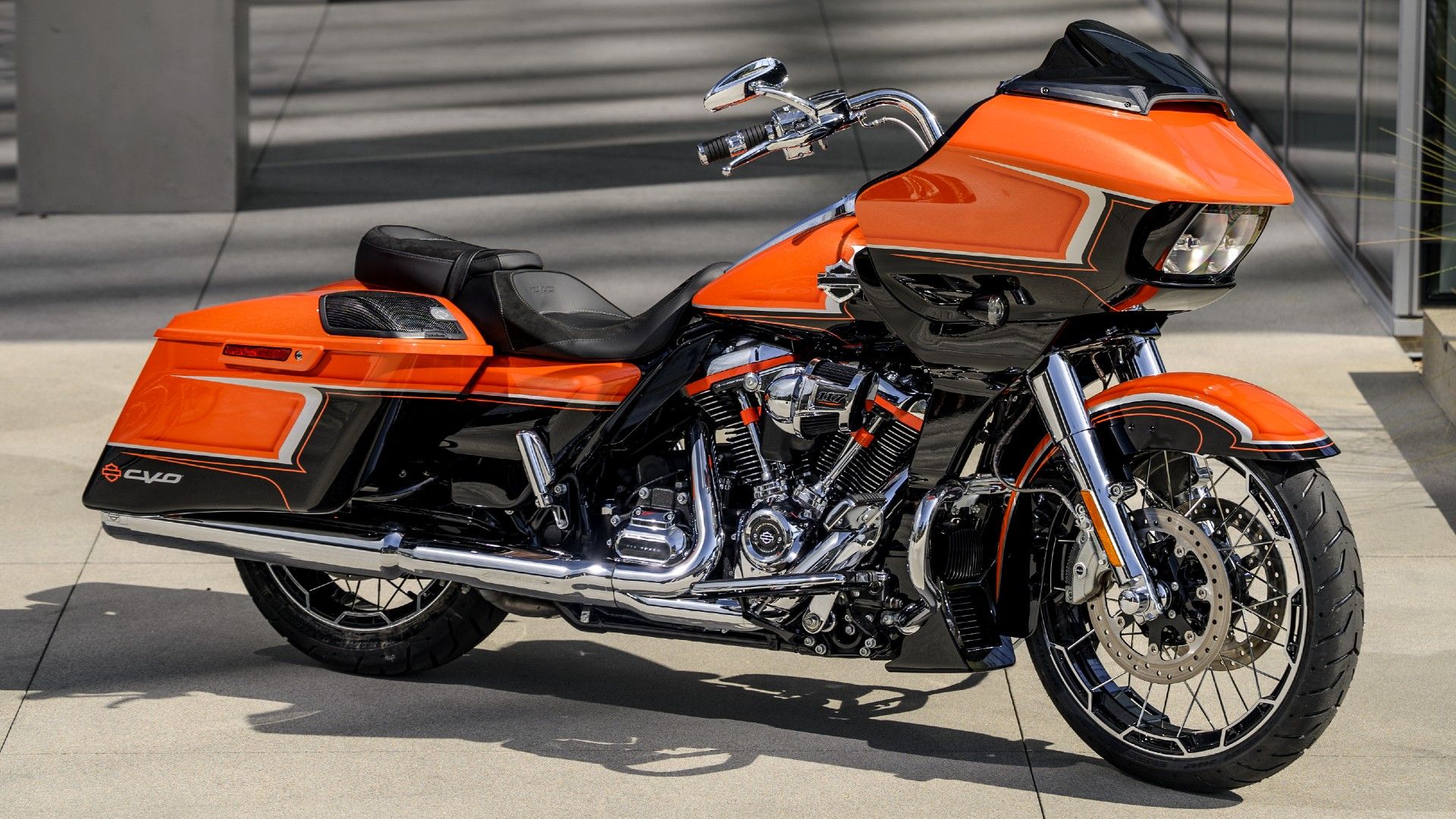Summary
- Aston Martin releases the limited edition Valour to celebrate their 110th birthday, offering a manual car with a powerful twin-turbo V-12 engine and a full carbon fiber body.
- The Valour's design takes inspiration from the 1970s Vantage and Aston Martin RHAM/1, featuring unique touches like bespoke round headlights, air vents for cooling, and a pronounced front splitter.
- The interior of the Valour showcases unique elements, including a distinctive manual shifter as the center of attraction, carbon bucket racing seats with tweed inserts, and a choice of luxury materials such as cashmere and hand-stitched leather.
Aston Martin has had some exciting times in recent years since the release of the DB11 in 2016. A lot of very powerful and special cars have also been made in that time with the Aston Martin Valkyrie at the pinnacle. It’s 2023 and Aston Martin is 110 years old and they’ve made a limited edition vehicle to celebrate.
The Aston Martin Valour is a limited edition vehicle built by request from customers. In this age of downsizing and automatic transmission, Aston Martin has broken the norm and given the world a new manual car with a big engine. So let’s take a look at Aston’s latest creation and find out what makes it so special.
- Design touches from the 1970s vantage and Aston Martin RHAM/1.
- A powerful twin-turbo V-12 manual.
- Full Carbon Fiber body.
- All cars will be commissioned through Q making them bespoke.
- Only 110 cars to celebrate 110 years of Aston Martin.
Design Inspiration From The 1980s Aston Martin Vantage
The Valour came about when Aston Martin first made the one-off Victor. This was a bespoke commission requested by a client and once revealed, everybody wanted one. So by popular demand, Aston Martin decided to make another car inspired by the Victor.
The Valour may look like the Victor but both cars take inspiration from the Aston Martin V-8 Vantage made from 1969-1989 and the RHAM/1 racecar a.k.a the Muncher. The round headlights are bespoke and made specifically for this car with air vents beside them for cooling purposes. It has a wide front grille with horizontal slats but retains the signature Aston Martin design. At the bottom, there is a very pronounced front splitter with aero curtains on the sides that direct airflow along the car's bodywork.
The hood is quite interesting too with an open-air curtain just above the headlights. A large horse-shoe-style vent is integrated into the hood for heat extraction along with a hood bulge and two NACA ducts. It’s a very imposing front end that seems like someone is staring quite seriously at you.
Its side profile is quite striking with those 21-inch honeycomb design wheels which first featured on the one-off Victor and the Valkyrie. The fenders are also a striking piece that serves as air vents that pull out air from the wheels. There’s a huge side skirt that runs the entire wheelbase of the vehicle with an aero curtain at the end.
The rear end is just as dramatic as the front. First, there is no rear window, it has been replaced with rear aero louvers with a camera for rear visibility. The ducktail spoiler is integrated into the bodywork giving it a clean look. The twelve individual taillights are very similar to the ones on the Valkyrie. They are very sleek in design with a rear grill mimicking the light design.
Finally, there’s a huge diffuser with a middle triple exit exhaust. The entire car is also made out of Carbon Fiber to make the car lightweight and help produce such complex shapes. The proportions also add to the dramatic look of this car, it is low and wide, shorter than the DB11 but a bit longer than the vantage.
The Interior Is Familiar But Unique
The interior layout is similar to current production models like the DB11 but has a unique interior layout. It has the same steering and controls as a DB11 but there are noticeable differences. First, is the obvious manual gear shift which looks like a piece of artifact and can be finished in Aluminum, titanium, carbon fiber, or walnut combination. Even the doors feature a mix of these exquisite materials.
Aston Martin has made its new manual shifter the center of attraction in the vehicles. The build quality and presentation make it the first thing you take note of when you step inside. It does not look like a normal shifter and also has no gates. Its mechanism presentation is similar to what would be found in a Pagani or Lotus and Aston Martin are proud to show this off.
There are no comfort seats in this, instead, you get carbon bucket racing seats but with a unique material. Tweed material is used in the seat inserts and roof lining mixed with either Alcantara or leather. Tweed is a durable material and has been used in previous Aston Martin vehicles, it was first featured on the 1959 Le Mans-winning Aston Martin DBR1. Customers also get the choice of cashmere and hand-stitched leather.
Twin-Turbo V-12 Engine And A Bespoke Six-Speed Manual
The Valour makes use of the series production V-12 found in the DBS Superleggera and DBS 770 Ultimate. Here it makes 705 horsepower and 555 pound-feet of torque with a redline at 7,000 RPM. It is a powerful unit, but in its most powerful form, it makes 760 horsepower and 654 pound-feet of torque in the DBS 770 Ultimate. There are no performance numbers available but it will no doubt be a very fast vehicle.
But being a manual, the Valour had to make less power due to changes in the transmission. It sends all power to the rear wheels via a six-speed manual transmission built specifically for this car. Aston Martin already had a seven-speed manual transmission but had to build a new six-speed manual for this specific application.
Specifications
|
Engine |
Twin-turbo V-12 |
|---|---|
|
Displacement |
5.2 liters |
|
Power |
705 horsepower |
|
Torque |
555 pound-feet |
|
Transmission |
Six-Speed Manual |
|
Drivetrain |
Rear Wheel Drive |
Tires were also a major requirement for this vehicle and Aston Martin is not the first company to do it. But in collaboration with Michelin, the Valour wears the next generation of tires known as the Michelin Pilot Sport 5 tire (Michelin (PS5). This replaces the Michelin PS4 tires which were great, this new tire will provide great drivability in both dry and wet weather conditions.
The Valour has been built to be a driver’s car with the steering and suspension setup to provide detailed feedback to the driver’s input. This is further proven with a rigid chassis, this is the stiffest bonded Aluminum and Carbon fiber structured Aston Martin to date. Combining all these attributes makes this car the most engaging and fun to drive Aston Martin road car.
Only 110 Cars But They’re All Sold Out
As previously stated, the Aston Martin Victor caused a stir among Aston Martin customers who wanted a piece of that vehicle. This led to this bespoke creation which is limited to just 110 cars to mark the 110th birthday celebration. It is also known as the Son of Victor as it looks just like the Aston Martin Victor with a lot of subtle styling differences.
Each car will be unique as they are all Q-commissioned vehicles. This means they will be built in conjunction with Aston Martin’s bespoke department. The changes made will mainly be color choices and interior materials and finishes as the car comes fully equipped. But even with prices starting around $1 million, all vehicles were sold before being unveiled to the public.
Aston Martin says this may be the last time we see a combination of a big engine with a manual gearbox from them. The Valour is being described as a moment in time for the Aston Martin brand and may never be repeated. Each owner will be incredibly lucky to own this car at a time when such combinations are rare.


